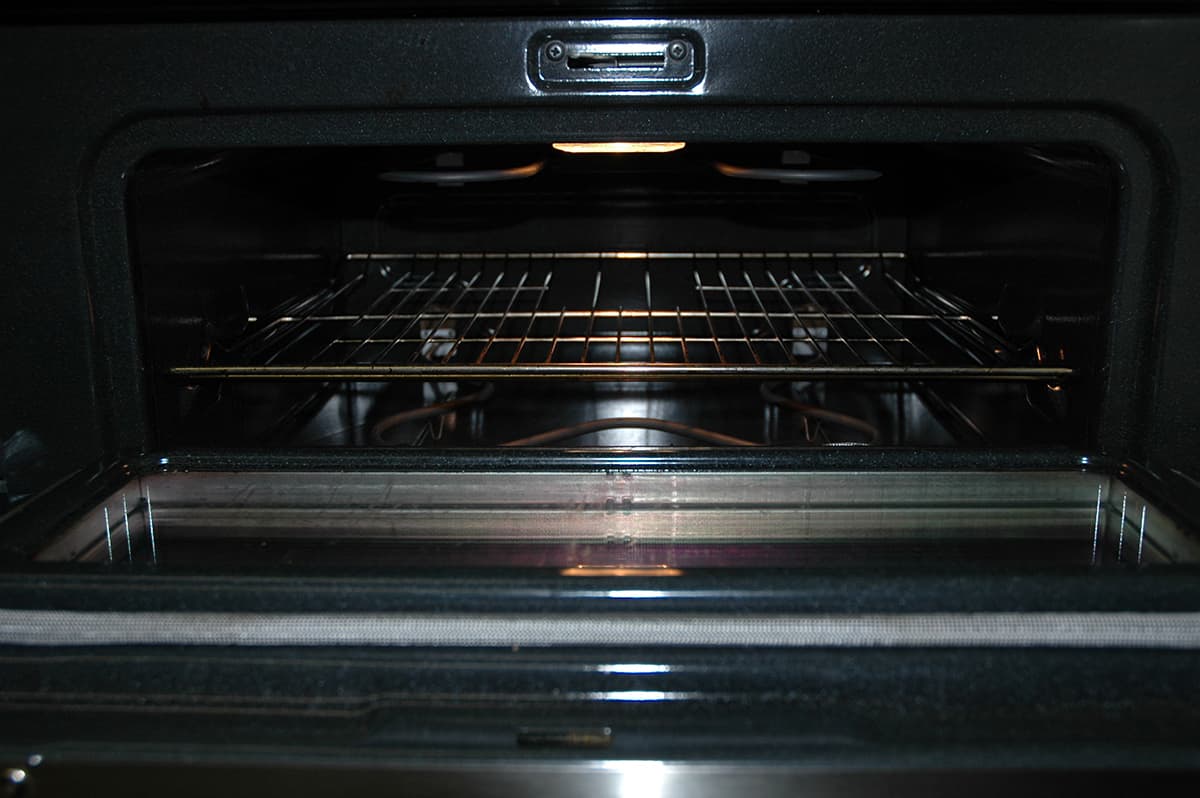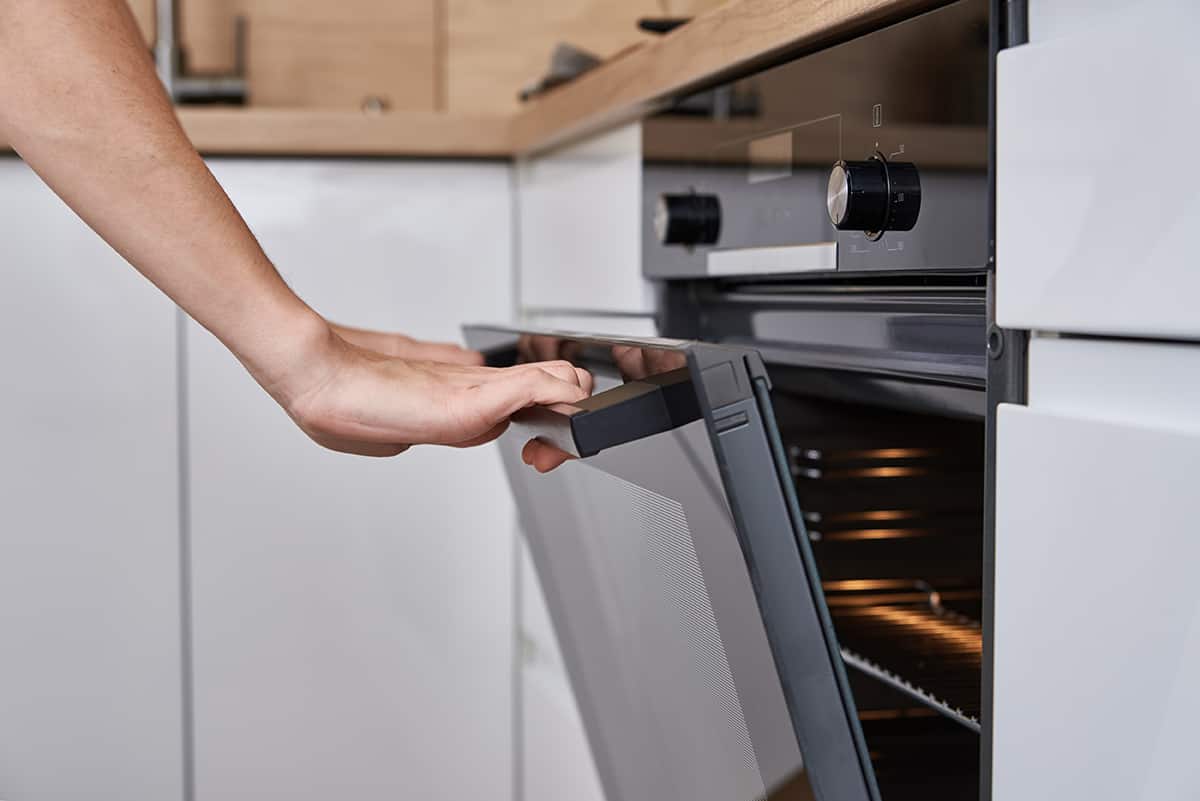The self-cleaning feature in modern-day electric ovens is a godsend for many people. Instead of spending hours and hours scrubbing the inside of an oven, you can activate the self-cleaning function to nuke solid debris into powdery dust. But what if you want to stop the self-cleaning feature early?
Whether or not you can stop a self-cleaning oven early depends on the make and model. In most cases, pressing the Cancel or Clear button on the oven’s control panel should halt the self-cleaning process. Let the oven cool down completely before attempting to open the door.
There’s still a lot more we can learn about the self-cleaning function in select oven models. In today’s guide, I’ll explain what this feature is, how often you should use it, and how to prepare your oven before starting a self-cleaning cycle.
What Is a Self-Cleaning Oven?
Modern electric ovens come with a wide range of features our forefathers have never dreamed of. One of those jaw-droppingly awesome features is self-cleaning. But what is a self-cleaning oven?
The short and sweet is that a self-cleaning oven is an oven that cleans itself. The more technical answer is that a self-cleaning oven heats up far beyond its normal cooking temperature range to burn solid food soils to a crisp.
Self-cleaning ovens typically reach temperatures of over 800°F. To put that into perspective, most electric oven broilers only reach between 500 and 550°F. Needless to say, your oven will become incredibly hot when you run a self-cleaning cycle.
On average, a self-cleaning cycle will last anywhere from 1 to 3 hours. During the process, your oven’s door will automatically lock to prevent children, pets, and yourself from second-degree burns.
When Should You Use a Self-Cleaning Oven?

One common misconception about self-cleaning ovens is that you should use this feature whenever your oven is dirty. This simply isn’t true.
Take a look at your oven’s paperwork and look for how often the manufacturer recommends running a self-cleaning cycle. Usually, it will be once every 4 to 6 months. But why is that?
Honestly, the self-cleaning feature should only be used as a last resort to remove caked-on debris from your oven’s inner walls. So, you should still practice regular maintenance to keep your oven spic and span, but if you ever forget to wipe away the boil-over of a casserole months after you’ve enjoyed the dish, you can rely on the self-cleaning feature.
How to Prepare Your Oven for Self-Cleaning
Since the self-cleaning feature superheats your oven to higher-than-normal temperatures, there are a few things you should do before starting the cycle.
1. Plan your day
This might sound unnecessary, but you won’t be able to use your oven for anything while the self-cleaning cycle is activated. So, make sure all of your cooking duties are done and that you’ll be awake while the oven is cleaning itself. It’s unsafe to leave a self-cleaning oven unattended when it’s nuking solid food soils to a fine powder.
2. Move flammable objects away from the oven
This is a no-brainer, but it’s still worth mentioning. Make sure all rags, cookbooks, and wooden utensils are far away from the oven when you activate the self-cleaning cycle. The heat from inside the oven can flow outward and, at the very least, singe nearby objects.
3. Vent your kitchen
Here’s something nobody tells you about self-cleaning ovens—they reek. Try and imagine the smell of old bits of meat and vegetables being heated up to and beyond 800°F for at least 60 consecutive minutes. It’s not a pretty thought, and the smell is even worse.
As such, you should think about how you’re going to ventilate your kitchen. Turn on the range hood, open any and all kitchen windows, and maybe place a fan in the center of your kitchen for good measure.
4. Preclean the oven
Yes, you’ll need to clean your oven before you activate the self-cleaning function. The entire point of this feature is to do less cleaning, and you’ll have a much easier time removing the powder from your oven if there’s less of it to deal with.
Wipe the inside of the oven with a clean paper towel and remove as much of the solid debris as possible. You can leave any caked-on substances where they are, but if you can, loosen the debris and remove them before starting a self-cleaning cycle.
Can You Turn Off the Self-Cleaning Oven Early?
1 to 3 hours is a long time, so what do you do when guests unexpectedly arrive at your home and demand a baked casserole? Do you politely tell them to wait for your oven to complete the self-cleaning cycle, or do you stop the cycle altogether? Is it even possible?
Luckily, you can stop a self-cleaning oven before the cycle has finished, at least if your oven allows it. Try pressing the Cancel or Clear button on the oven’s control panel and wait until it returns to standby mode.
However, just because you stopped the self-cleaning cycle early doesn’t mean the oven is immediately ready to use. Remember how self-cleaning ovens reach temperatures of upwards of 800°F? It can take at least 1 hour for that heat to dissipate, after which you’ll need to spend a few good moments removing the leftover powder.
Why Is Oven Door Locked After Self-Cleaning?

Many manufacturers have preprogrammed their ovens to automatically lock when the self-cleaning cycle is activated. The door will remain locked until the process is complete and the oven has returned to a non-scorching temperature. This usually takes 1 hour, but it can’t take longer for larger ovens.
But after stopping the self-cleaning cycle early, you may find the door to still be locked. In some cases, the auto-locking mechanism will stay engaged based on a countdown timer. Even if you stop the oven early, it will wait for the appropriate time (3 hours of self-cleaning + 1 hour of cooling) to disengage.
If you want to open the oven door early, try turning the oven off. Now, unplug it from its power source or shut off the circuit. Wait for 10 to 30 seconds before restoring power to the oven and turning it back on.
Are Self-Cleaning Ovens Safe?
Generally, yes. As long as you or someone else is awake to watch over the oven while it’s cleaning itself, it’s completely safe to use. Just be aware of the potential hazards of a self-cleaning oven since it relies on time and heat to work.
Do Self-Cleaning Ovens Emit Carbon Monoxide?
The fact of the matter is the caked-on soils in your oven can release carbon monoxide, which can permeate the air. This is why it’s mandatory that you think of how to ventilate your kitchen before turning on the self-cleaning feature.
To make matters even more confusing, there are no conclusive studies that determine how much carbon monoxide is released into the air during this cycle. However, it’s better to be safe and sorry and use run a self-cleaning cycle sparingly.
Can You Run a Self-Cleaning Cycle Overnight?
You should not run a self-cleaning oven overnight or when nobody is present at home.
Carbon monoxide poisoning isn’t the only thing you need to worry about. If anything goes awry when the oven is at full heat, nobody will be around to stop the oven in its steps. Be smart and do not become a part of the 470 cooking-related home fires every day.






